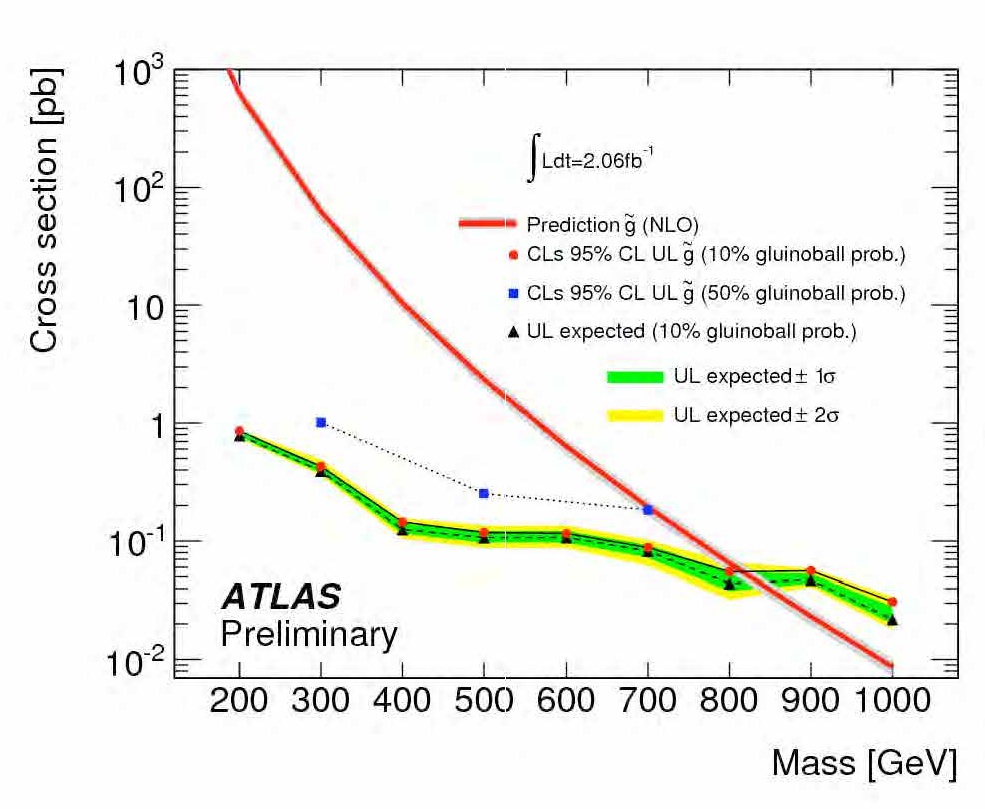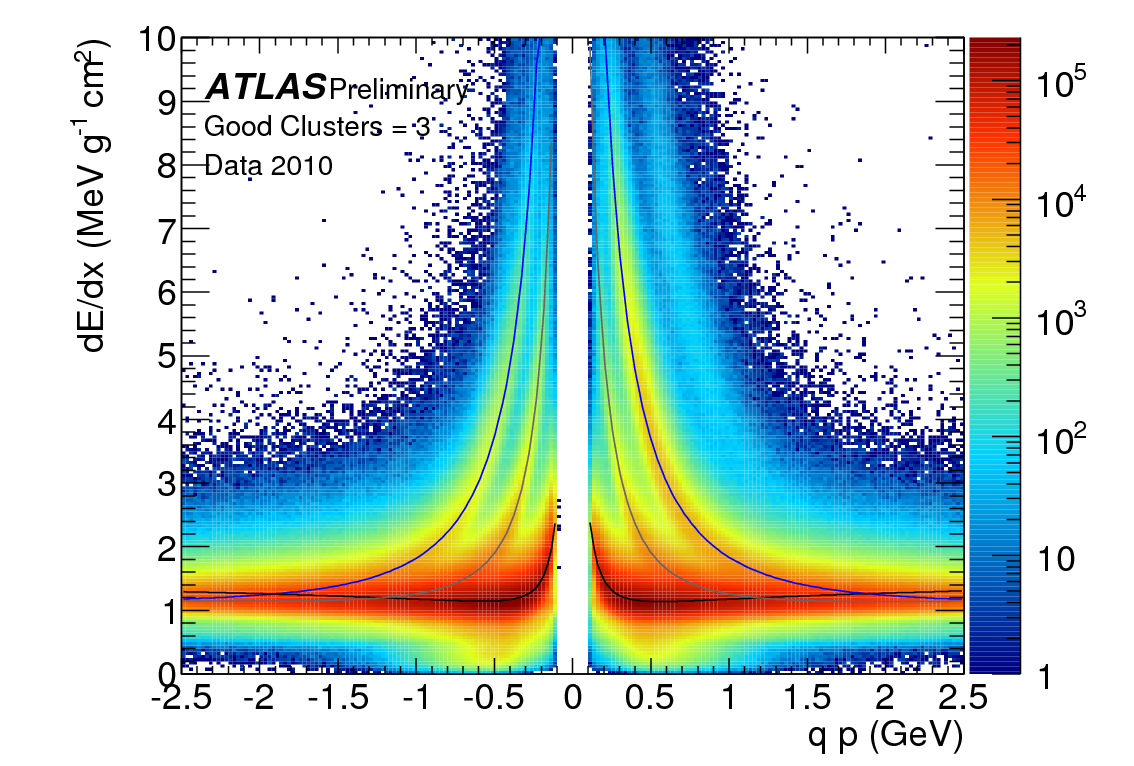Moriond day 2: Inverse time dilation
6 March 2012 | By
I work with crazy particles. Dark matter is pretty weird, so are neutrinos seemingly, but what I search for blows it all away. Tuesday was the day of my presentation. The format for these young scientist presentations are 5 minutes and time for a single question afterwards. Trying to present a full picture of any analysis in that short a time is impossible; instead the idea is more like handing out a business card telling the audience what you work on in the hope that some will be interested and contact you informally afterwards. For my presentation I wanted to introduce the general methodology we use and the latest results. Normally we can rely on the fact that most people in the audience know how we detect particles in ATLAS, but for the particles I look for it is slightly different.
The particles we look for in my group are long-lived and carry color charge; this allows them to form into hadrons, like protons and pions. We call these particles R-Hadrons (R is from R-parity, a concept from supersymmetry). An R-Hadron could be a supersymmetric gluino combined with two or three standard model quarks. Depending on the type of quarks the R-Hadron can be electrically charged or neutral. This is very important when we want to the detect the particles. We can only detect charged particles in our detectors and because these R-Hadrons don't decay before they reach the detector we need them to be charged to find them. Now the method we use to distinguish R-Hadrons from say, muons and electrons is by their velocity. These particles must be very heavy. When we produce something heavy at the LHC there can't be a lot of energy left to make them move fast.

The neat thing is that slow particles leaves a stronger signal in many of the detectors in ATLAS than fast particles, that way we can measure a difference. In fact, by measuring either the signal strength or the time of flight far away from the collision, we can calculate the mass of the particle directly. In that way we find R-Hadrons as well as their mass.
Now describing the method is in itself a full 45 min talk as we have around six different ways of measuring the velocity. The analysis that uses the velocity information can be fully as complicated (in fact more so, as the electric charge can change throughout the particles path in the detector), so giving a full description is impossible in five minutes.
What I ended up with was one slide on what we call these objects and what theories predict them. Another slide describing all the detection methods and a slide with the most recent result from one of the searches for R-Hadrons.

For this presentation the most recent result was a new search using only the innermost detector system in ATLAS, the Pixel detector. The analysis was carried out by collaborators in our pixel performance group and was just approved for publication the day before the talk. The analysis finds no gluino (color-octet) R-Hadrons with a mass below 810 GeV a nice improvement from the first year's limit of 650 GeV.
The interesting part for me personally was the discussions I had with people afterwards. I met a few theorists who work with these kinds of particles and we talked about including their specific models in our limits. Other common items on the search list are quasi-long-lived particles, R-Hadrons that decay with various lifetimes. All very interesting suggestions. While these searches are in the category of "blue sky research" for us experimentalists we look for them because we know how and because they form very interesting test subjects, it is also nice to hear that they are appreciated by theorists as well :)




